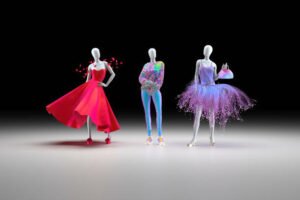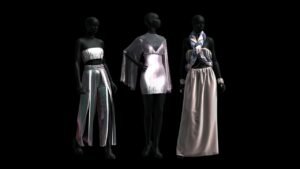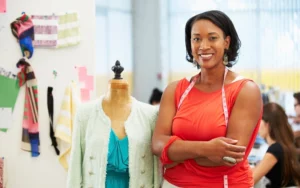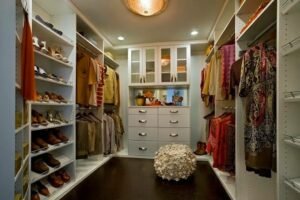In recent years, technology has become an integral part of the fashion industry, transforming how we produce and experience fashion. From design to retail, technology is making significant changes that are shaping the future of the industry. One area where technology has had a significant impact is how we showcase fashion, with the introduction of virtual reality (VR) into fashion shows.

Virtual Reality has been around for decades, but it’s only been in recent years that it has become more accessible and affordable. VR has become a buzzword in the fashion industry, with designers experimenting with VR technology to enhance the fashion show experience. The use of VR in fashion shows provides a new dimension to the industry, creating an immersive experience that can be accessed by anyone, anywhere in the world.
One of the most significant benefits of using VR in fashion shows is that it provides designers with an opportunity to showcase their collections in a completely new way. VR allows designers to create virtual environments that can be customized to suit their collection’s theme, allowing them to create a unique experience that can’t be replicated in a traditional fashion show. By incorporating VR, designers can create a more engaging experience for their audience, which can help to increase the brand’s visibility and attract new customers.
One other huge advantage of using VR in fashion shows is that it can help to reduce the environmental impact of fashion shows. Traditional fashion shows require a significant amount of resources, including travel, accommodation, and the creation of elaborate sets. By using VR, designers can eliminate many of these requirements, reducing the carbon footprint of their shows. This also makes it possible for people who might not have been able to attend a physical show due to geographical or financial constraints to experience the show.

VR provides a way for designers to collect data on how people interact with their collections. With the use of VR headsets, designers can track where users are looking, what they’re clicking on, and how long they’re spending on each piece of clothing. This data can be used to improve future collections and help designers to understand their audience better. Additionally, it can also be used to create personalized experiences for customers, tailoring collections to specific preferences and interests.
In recent years, several fashion brands have already started using VR in their fashion shows. One such brand is Tommy Hilfiger, who used VR in their Fall 2016 show to give their audience a 360-degree view of the runway. The experience was so popular that it was replicated in several of their stores, allowing customers to experience the show even after it had ended. Similarly, in 2020, Louis Vuitton used VR to showcase their men’s spring-summer 2021 collection, allowing viewers to explore the collection in a virtual space.

However, VR in fashion shows is not without its limitations. For example, VR headsets can be expensive, and not everyone can access them. This means that the audience for VR fashion shows is still limited, and not everyone will be able to experience them. Additionally, the technology is still evolving, and there are limitations to what can be achieved with current VR technology. For example, the quality of the images and textures may not be as high as what can be achieved in a physical fashion show.

We can confidently say that the use of VR in fashion shows is an exciting development that has the potential to transform the industry. It provides a new way to showcase collections, reducing the environmental impact of traditional fashion shows, and allowing designers to collect valuable data on their audience’s preferences. While there are still limitations to the technology, it is clear that the use of VR in fashion shows is only going to increase in the coming years, making the fashion industry even more accessible, immersive, and engaging for everyone.




